This week we’re taking a look at the absolute basics of rhythm! We’re going to look at bars, time signatures, tempo, a basic set of rhythms and how to both play and count them. These are all things every bass player should be well versed in as a member of the rhythm section.
This lesson is taken from the Groove Trainer For Bass Guitar course. Click Here For More Details
Musical Pulse
Western music is generally divided up into bars (also called measures). Each bar cycles a certain number of beats. This is the recurring pulse to which you would usually tap your foot.
As an example, you might count 1 2 3 4 1 2 3 4.
In this example we have four beats per bar. The number of beats is indicated by the time signature.
Time Signatures
A time signature has two numbers:

- Top Number (Numerator) shows the number of beats in a bar
- Bottom Number (Denominator) shows the type of beats in a bar.
Time signatures are best understood as fractions.
For a time signature of 4/4 we have four quarter notes per bar. Quarter notes are the type of beat. So the time signature of 4/4 can be compared to the fraction of four quarters.
This also applies to any other time signature. 5/8 would be five 8th notes per bar. 3/16 would be three sixteenth notes per bar.
Tempo
Before we can count bars of music, we also need to know the tempo, or speed of the piece.
In traditional classical music you might see Italian terms such as adagio or allegro but in more modern music you’re more likely to see a metronome marking as follows:

This would indicate 120 beats per minute. See Video Example
Rhythm
Now we’ve looked at the basics of time signatures and tempo we need to look at some rhythms.
For each rhythmic example and drill we will use a single note of C at the 3rd fret of the A string. Simply play the rhythms specified while counting aloud and tapping the foot to the beat.
We can progressively introduce each successive division of the bar in turn. All of the following drills are demonstrated in the video lessons:
Whole Notes
Whole Notes are 4 beats in length and are written as:

Whole Note Rhythm Drill:
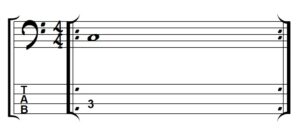
Half Notes
Half Notes are 2 beats in length and are written as:

Half Note Rhythm Drills:
1.
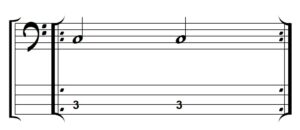
2.
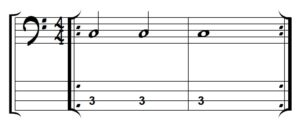
3.
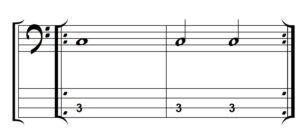
Quarter Notes
Quarter Notes are 1 beat in length and are written as:

Quarter Note Rhythm Drills:
1.
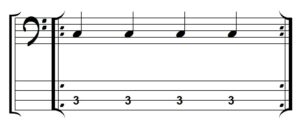
2.
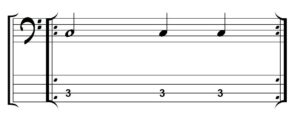
3.
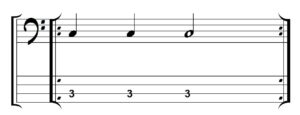
Eighth Notes
Eighth notes are half a beat in length and are counted as 1 and 2 and 3 and 4 and.
Single eighth notes are written as:

When we join two eighth notes we use a beam:
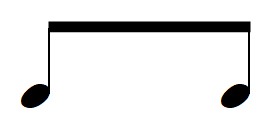
We can also join multiple 8th notes together with beams:

8th Note Rhythm Drills:
1.
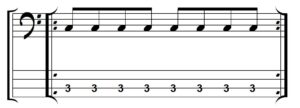
2.
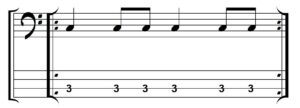
3.
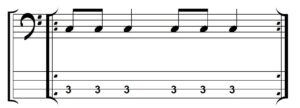
4.
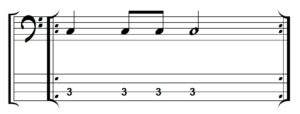
5.
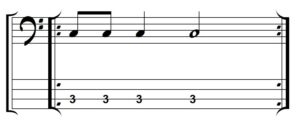
6.
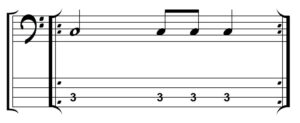
7.
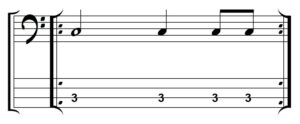
Dotted Half Notes
Dotted Half Notes are 3 beats in length

Dotted Half Note Rhythm Drills:
1.
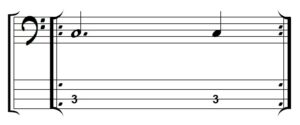
2.
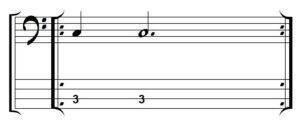
Dotted Quarter Notes
Dotted Quarter Notes are 3 eighth notes in length.

Dotted Quarter Note Rhythm Drills:
1.
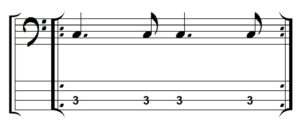
2.
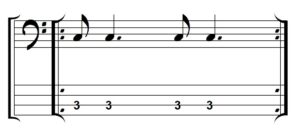
As you learn about rhythm you’ll notice that it’s a very organised mathematical system and as you add more and more rhythms into your study you’ll become better at keeping your bearings within a bar.
Groove Trainer For Bass Guitar
This lesson is taken from the Groove Trainer For Bass Guitar Course here at Talkingbass. The course features 78 lessons and 60 progressive grooves to work through from beginner to intermediate level.






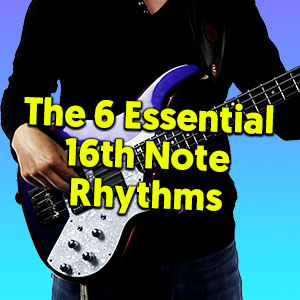


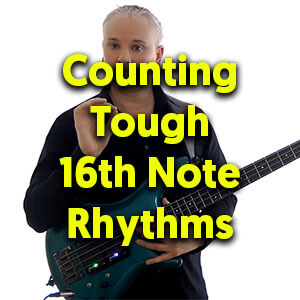



Leave A Comment